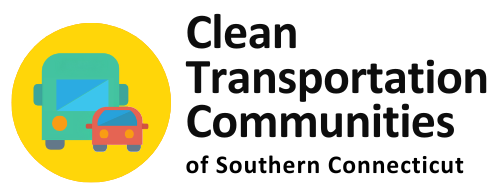Fuel cell electric vehicles (FCEVs) have been around for a while, mostly in limited quantities and locations through demonstration projects. But these vehicles, with their potential to significantly cut petroleum consumption and reduce emissions, are starting to make their way into dealerships and onto roads across the country. Though the market for FCEVs is still in its infancy, many government organizations and private companies are working on research and deployment efforts to make hydrogen a widespread, viable, affordable, and safe alternative vehicle fuel.
Below are some of the recent activities related to FCEV commercialization:
Vehicle Availability
FCEVs are beginning to enter the consumer market in certain regions in the United States and around the world. Hyundai introduced the 2015 Tucson Fuel Cell in California last year for lease, and Toyota Motor Company announced they will release the 2016 Mirai for sale this October at eight California dealerships that were specially selected for their experience with alternative fuels and their proximity to existing hydrogen fueling stations. Vehicle original equipment manufacturers (OEMs) such as BMW, Ford, General Motors, Honda, Mercedes/Daimler, Nissan, and Volkswagen are expecting to launch FCEV production vehicles in select regions of the country in the coming years. Other automakers continue to introduce their FCEVs through demonstration projects. The FCEV market is also growing for buses, ground support equipment, medium- and heavy-duty vehicles, back-up power, prime power applications, and continues to be strong for forklifts.
While OEMs are offering affordable lease options, some of which include the cost of fuel, FCEVs are still expensive. However, production costs have decreased significantly in recent years and FCEVs are expected to be cost-competitive with conventional vehicles in the coming years.
Hydrogen Fueling Infrastructure
As the FCEV market expands, hydrogen fueling infrastructure will need to grow to match demand. Most of the hydrogen stations available today have been built to support OEM FCEV demonstration projects. According to the Alternative Fuels Data Center’s (AFDC) Alternative Fueling Station Locator (http://www.afdc.energy.gov/fuels/hydrogen_locations.html), there are 12 publicly accessible hydrogen stations in the United States, with many more in the planning stages. According to the California Fuel Cell Partnership (http://cafcp.org/), there are 49 more stations in development in California that will be publically available. Development efforts are also underway in Connecticut, Hawaii, Maine, Massachusetts, New Jersey, New York, Rhode Island, and Vermont.
Like the vehicles, the high cost of fueling equipment remains a key challenge. Hydrogen station costs can vary significantly based on hydrogen feedstock, station capacity, utilization, proximity to production, and available incentives. The National Renewable Energy Laboratory’s (NREL) Hydrogen Station Cost Calculator estimates that stations can cost between $2 and $5 million. However, like FCEVs, as the demand grows, the cost of hydrogen fueling equipment will decrease and the number of stations will increase.
Codes, Standards, and Incentives
The widespread deployment of FCEVs and the associated network of hydrogen fueling stations requires the development, maintenance, and harmonization of codes, standards, and regulations to keep up with the technology. These efforts are ongoing and are supported by the U.S. Department of Energy (DOE), as well as domestic and international organizations.
Incentives will also continue to be important to promote and maintain a market for hydrogen and FCEVs. California is leading in the number of relevant state incentives. For instance, to meet the objectives of California’s Zero Emission Vehicle (ZEV) Program, the California Energy Commission’s Alternative and Renewable Fuel and Vehicle Technology Program (http://www.energy.ca.gov/drive/) is allocating $20 million annually for the construction of at least 100 public hydrogen stations in California by January 1, 2024. In addition, California’s Clean Vehicle Rebate Project offers up to $5,000 for the purchase or lease of approved FCEVs (http://energycenter.org/clean-vehicle-rebate-project). Nine other states (Connecticut, Maine, Maryland, Massachusetts, New Jersey, New York, Oregon, Rhode Island, and Vermont) have also adopted California’s ZEV mandate to increase the number of ZEVs, including FCEVs, on the roads.
Ongoing Research and Development
Significant research and development efforts by DOE, the national laboratories, and other H2USA partners have brought the hydrogen industry to where it is today (http://energy.gov/eere/fuelcells/accomplishments-and-progress). Through their Fuel Cell Technologies Office (http://energy.gov/eere/fuelcells/fuel-cell-technologies-office), DOE continues to support research in the areas of hydrogen production, delivery, and storage, as well as technology validation, manufacturing, and market transformation.
Additional Resources
- AFDC’s Hydrogen page (http://www.afdc.energy.gov/fuels/hydrogen.html) provides basic information on hydrogen, FCEVs, and the associated infrastructure.
- AFDC’s Alternative Fuel and Advanced Vehicle Search (http://www.afdc.energy.gov/vehicles/search/) allows users to look for available FCEVs.
- H2USA, a public-private partnership to promote hydrogen and FCEV commercialization and adoption, maintains a FCEV page (http://h2usa.org/fuel-cell-electric-vehicles).
- NREL’s Fuel Cell and Hydrogen Technology Validation page (http://www.nrel.gov/hydrogen/proj_tech_validation.html) includes evaluation and performance review data on various FCEVs in a real-world setting, as well as hydrogen station performance, maintenance, cost, and safety data.
- NREL’s report, Hydrogen Station Cost Estimates (http://www.nrel.gov/docs/fy13osti/56412.pdf) outlines the costs associated with hydrogen fueling stations.
- Argonne National Laboratory’s Hydrogen Refueling Station Analysis Model (HRSAM;http://hydrogen.energy.gov/h2a_delivery.html) can be used to calculate the cost of hydrogen stations.
- NREL’s Hydrogen Financial Analysis Scenario Tool (H2FAST; http://www.nrel.gov/hydrogen/h2fast/) can also provide useful information on the cost of hydrogen stations.
- DOE’s website (http://energy.gov/eere/fuelcells/safety-codes-and-standards) covers relevant safety, codes, and standards.
- AFDC’s Hydrogen Laws and Incentives page (http://www.afdc.energy.gov/fuels/laws/HY) is a searchable tool with information on state regulations and incentives pertaining to hydrogen.
Clean Cities Technical Response Service Team
800-254-6735
